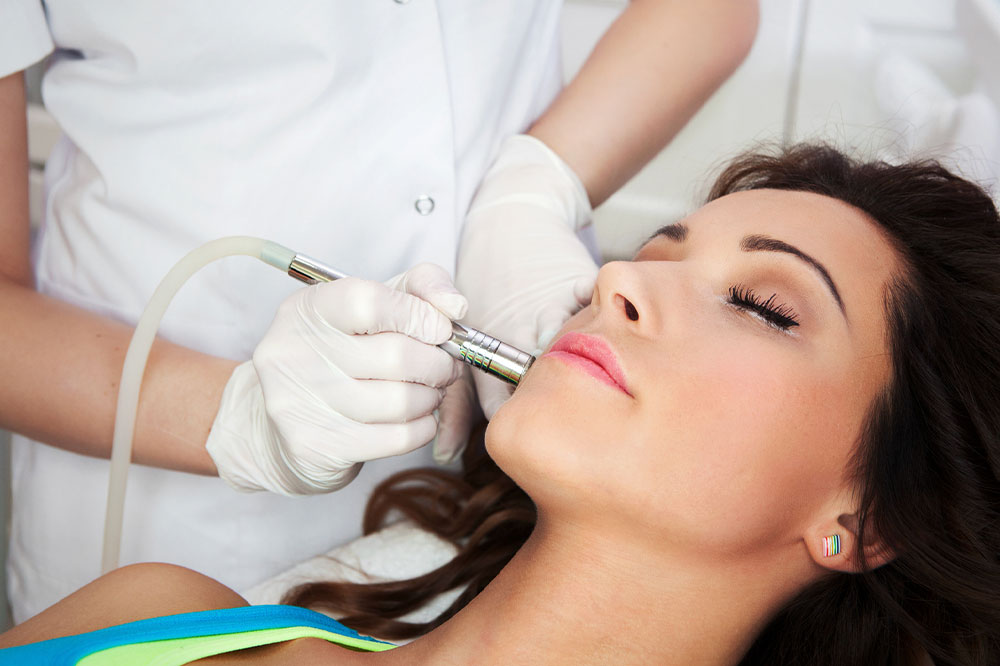Things to Know About Laser Skin Tightening

Laser skin tightening is a non-surgical and minimally-invasive procedure. Although it can be done anywhere on the body, it is most commonly performed on the stomach, face, neck, and jawline. The heat from the laser stimulates the production of collagen and elastin, which makes the skin appear firmer. The procedure works best for people between the ages of 30 and 65, although people who do not have noticeable sagging may find it preventative. Read on to know more.
What are the various procedures for skin tightening?
Different types of procedures are used for skin tightening. While they are similar, here are some key characteristics to know about each one:
Ultrasound skin tightening
This procedure works well for the face, neck, chin, and chest areas to treat early signs of aging. It can take anywhere between 30 to 90 minutes, with experienced pain levels differing from person to person. Specialists may recommend pre-treatment with topical numbing agents or NSAIDs, but the preparation requires little to no downtime.
Radiofrequency (RF) skin tightening
Radiofrequency is not a true laser but a procedure that treats the skin subdermally. RF releases heat into the skin and is safe for all skin types. It is an in-office procedure with little associated discomfort and no downtime.
Intense pulsed light and radiofrequency combination
This hybrid option treats deeper layers of the skin and yields gradual results with no discomfort. It also requires no downtime. However, the procedure may cause post-inflammatory pigmentation in people with darker skin tones.
How much does laser skin tightening cost?
Laser skin tightening is an elective cosmetic procedure and is not covered by insurance. The procedure also requires no preparation or downtime, apart from the appointment, which typically takes up to one and a half hours. One session of laser skin tightening can cost anywhere from $600 to $1000, and people generally need three to six sessions spaced a month apart for the best results.
How does laser skin tightening work?
An infrared laser is used to penetrate beneath the skin, which heats the collagen under the skin, causing it to constrict and make the skin appear firmer. The single-wavelength light energy produced by the laser also targets fibroblasts in the skin to produce more collagen. This procedure stimulates the regeneration and replacement of damaged cells. Many doctors also use radiofrequency and ultrasound technology to achieve similar results.
Are there any risks or side effects associated with laser skin tightening?
Laser skin tightening is generally considered safe and has fewer risks associated with it in comparison to surgical face lifts or cosmetic surgeries. However, it is also significantly less effective than a facelift. Lasers should only be handled by a cosmetic dermatologist or a highly trained and experienced skincare professional. Side effects are rare and may include redness, swelling, tingling, scarring, and changes in skin color.
People undergoing treatment for skin cancer or acne must consult with their doctors. However, pregnant women should not undergo laser skin tightening.
How does one prepare for laser skin tightening?
Some general guidelines to follow before a session of laser skin tightening include:
Show up freshly showered or bathed with completely clean skin, without any lotion, oils, creams, or fragrances.
If there is excessive hair in the treatment area, shave it before the appointment.
Avoid sun exposure to the treatment area, and do not use tanning beds for two weeks before the appointment.
Use a broad-spectrum sunblock with SPF30 or above daily.
Avoid using all topical products that may cause photosensitivity, such as hydroxy acids, salicylic acid, retinol, and benzoyl peroxide, in the treatment areas for three days before an appointment.
Follow all instructions given regarding any oral prescriptions. For those beginning new treatments, speak to the dermatologist before the appointment.
Do not get Botox injections, dermal filler injections, chemical peels, or microdermabrasion in the treatment area for at least 14 days before laser skin tightening.
What can one expect after laser skin tightening?
Some amount of redness or swelling is common post-procedure. It may persist for several days. People can use over-the-counter hydrocortisone or aloe vera to manage redness or irritation in the treated area. However, improper post-treatment care, such as excessive heat or sun exposure, can increase the chances of scarring, pigmentation, or skin texture changes. Avoid excessive heat in the treatment areas such as saunas, hot tubs, or workout sessions for 24 hours after a laser skin tightening treatment. Avoid sun exposure to the treated area, and do not use a tanning bed for two weeks post-treatment.
Just like the pre-treatment practices, remember to use a sunblock (SPF 30 or higher) every day, and avoid any topical products that may cause photosensitivity in the treatment areas for three days after treatment. It is also important to avoid any filler injections, chemical peels, or dermabrasion on the treatment for at least 14 days after a laser skin tightening session.
How long does laser skin tightening last?
The new dermal collagen that is produced becomes a part of the treated skin, meaning that laser skin tightening can improve the skin that lasts for years. However, one will likely need to have occasional maintenance appointments. Most people report improvement immediately, with more dramatic results visible a few weeks later. The growth of new collagen results in continued skin rejuvenation and a more youthful appearance with fewer lines, folds, and wrinkles. Limiting sun exposure and using a high-SPF sunscreen is imperative to protect these results, as the sun’s harmful ultraviolet rays can damage the existing and new collagen over time.
When opting for laser skin tightening, it is important to consult an experienced, board-certified dermatologist and speak to them about desired results, what to expect, and prices, and to see before and after photos of real clients to set the right expectations for one’s skin.






